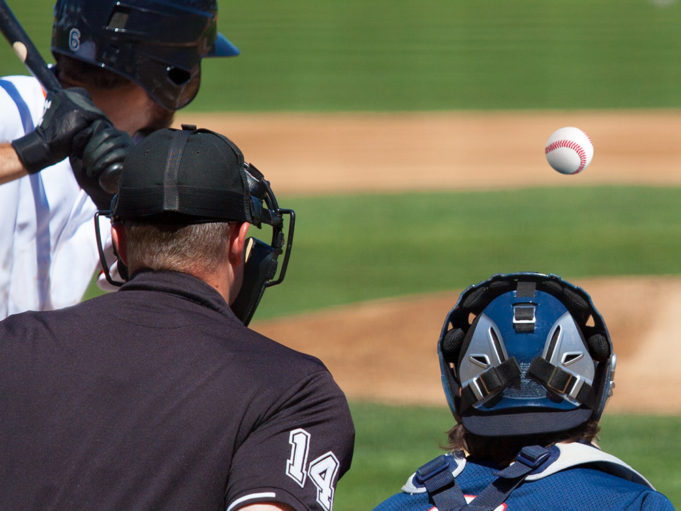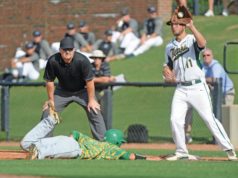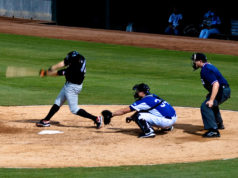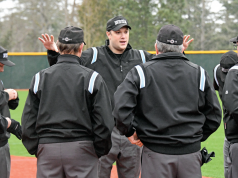An old adage that we hear from time to time is, “When in doubt, call ’em out.”
While that is a myth that shouldn’t be followed for plays on the bases, perhaps there is a bit of truth in that when referring to the opportunity to “ring one up” versus the alternative of asking your partner for help on a checked swing.
Typically, the checked swing appeal is not received with great enthusiasm, especially when the pitch has already been called a ball and the base umpire overturns the decision. Depending on the number of officials working the game, the decision regarding “did he go” may have to be rendered from the middle of the diamond, which is not the ideal location for determining if a swing has occurred or not.
One thing that complicates ruling on a swing is that the rules are different for each level. The NFHS rule is whether the batter actually struck at the ball (10-1-4a). In NCAA, it is whether the barrel of the bat passes the batter’s front hip (2-38). The pro rulebook is silent on what determines a swing.
So what is the best option when we have a checked swing that appears to the plate umpire that he did “go” but would also be a strike had he not attempted to swing?
The obvious check swing is easy. Make the proverbial point at the batter and check one off against the hitter.
However, a significant number of checked swings are not that easy. There are pros and cons for going with one decision over the other:
The called strike
The called strike eliminates any delay in the decision-making process.
That can prove beneficial for the game, since the decision is final. Defensive players know how to play on runners. And those runners know they are in jeopardy if it was a potential ball four and they were running.
I also believe there is more credibility placed on the plate umpire for getting the pitch right in the first place. Keep in mind we are dealing with swings that may or may not be ruled a strike (not the no-brainer swing). So by getting the strike, the umpire will retain credibility as opposed to risking it when the base umpire rules the batter did not go. Nothing gets a pitching coach more upset than having a close pitch called a ball and the checked swing ruled the same way. Two opportunities for a strike to be called and neither happens.
The swing
Along the same line, an offense will be bothered if you get a pitch it doesn’t think was a strike, especially if the angle from the team’s dugout looked like the batter didn’t go.
If you are going to call the swing from behind the plate, you have to be right. It’s better on the marginal checked swings to ask for help.
Yes, that puts pressure on our partner that we’d rather avoid, but he’s got a job to do as well.
Often the bench may have a better “view” than the base umpire, especially if the official is in the middle of the diamond or if a left-handed hitter is up and U1 is working on the first-base line. The perception of coaches is that base umpires cannot get a good “look” at the swing from those locations. Ironically, if the opposing team does not get the appeal call it desires, the bench will make it known that you should have “gotten it yourself.” Essentially it creates a no-win situation.
There is no conclusive answer for that situation. But discussions with peers have led me to believe that the concept of getting the pitch first and the swing second can prevent larger issues regarding balls and strikes.
What's Your Call? Leave a Comment:
Note: This article is archival in nature. Rules, interpretations, mechanics, philosophies and other information may or may not be correct for the current year.
This article is the copyright of ©Referee Enterprises, Inc., and may not be republished in whole or in part online, in print or in any capacity without expressed written permission from Referee. The article is made available for educational use by individuals.


















